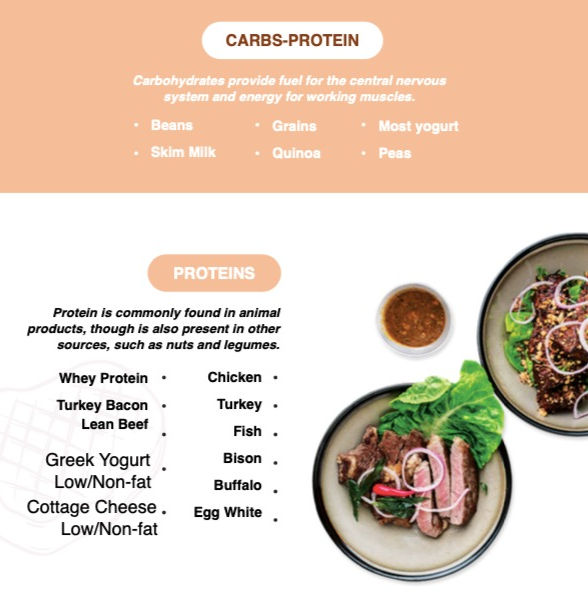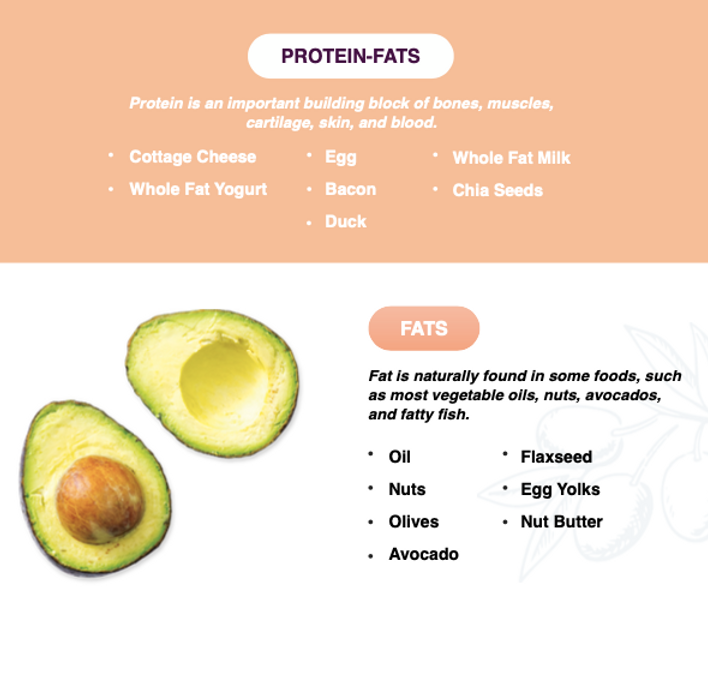Ever heard the term “macros” and wondered what the heck that actually means? This is a beginners guide to macros: making it simple to understand why paying attention to our macros matters. Macronutrients are the nutrients that our bodies need in large quantities to function properly. There are three main macronutrients: carbohydrates, proteins, and fats and within the umbrella of carbohydrates we also have fiber. Understanding these macronutrients is important for maintaining a healthy metabolism and making empowered choices in building balanced plates and keeping you off the blood sugar rollercoaster.

Tired of guessing + spinning your wheels with fitness + nutrition? Apply for Mountain Metabolic Coaching to work with our amazing team towards your personalized needs, schedule and goals!

CARBOHYDRATES
Carbohydrates are often associated with weight gain, but they are actually essential for our bodies – especially on a long term metabolic basis. Carbs are the body’s primary and preferred source of energy. They are found in foods such as bread, pasta, rice, fruits, and vegetables and there are two types of carbohydrates – simple and complex.
1. Simple Carbohydrates
These are made up of one or two sugar molecules and are digested quickly by our bodies. Foods like table sugar, honey, and fruit are examples of simple carbohydrates. They provide a quick boost of energy, making them ideal for pre-workout snacks or when you need an immediate energy source. However, it’s important to consume them in moderation as they can lead to blood sugar spikes if consumed in excess.
Tips for Incorporating Simple Carbohydrates:
– Opt for natural sources of simple carbohydrates like fruits that contain fiber instead of processed foods with added sugars.
– Consume simple carbohydrates in combination with other macronutrients like protein and healthy fat to avoid drastic blood sugar spikes.
2. Complex Carbohydrates
These take longer to digest and provide more sustained energy over time rather than a quick glucose spike. Unlike simple carbohydrates, complex carbohydrates are made up of multiple sugar molecules. Examples include whole grains, legumes, and vegetables. Fiber is a subcategory of carbohydrates that helps regulate blood sugar levels, feeds our gut microbiome, and helps with maintaining healthy cholesterol levels. The recommended daily amount for the average person is about 40-65% out of the total daily calorie intake with a 1:10 fiber to carb ratio within those numbers.

PROTEINS
Protein is essential for building and repairing tissues, as well as for many bodily functions and is the metabolic powerhouse. Proteins are found in foods such as meat, fish, eggs, dairy products, legumes, and nuts. They are made up of amino acids, some of which the body can produce, while others need to be obtained from food. It is recommended that 20-35% of your daily calorie intake comes from proteins, however from a metabolic standpoint, especially in terms of weight loss, we tend to aim on the higher side of that percentage to optimize metabolic function and healthy muscle tissue.
1. Animal-Based Proteins: The Complete Protein Package
Animal-based protein sources like meat, poultry, fish, and dairy products contain all the essential amino acids our bodies need. These are often referred to as complete proteins. If you follow a non-vegetarian or non-vegan diet, it is relatively easier to meet your protein needs through these sources. However, it’s important to choose lean cuts of meat and opt for healthier cooking methods to avoid excess saturated fat intake.
Tips for Incorporating Animal-Based Proteins:
– Choose lean cuts of meat like chicken breasts, turkey, and wild game or opt for seafood rich in omega-3 fatty acids like salmon.
– Incorporate low-fat dairy products like Greek yogurt or cottage cheese for a protein-packed snack.
2. Plant-Based Proteins: Combining Sources for Complete Proteins
If you follow a vegetarian or vegan diet, it’s important to be mindful of combining different plant-based protein sources to get all the essential amino acids. While most plant-based proteins are incomplete, combining different protein sources like grains (rice, quinoa) and legumes (beans, lentils) or beans and nuts can create a complete protein profile.
Tips for Incorporating Plant-Based Proteins:
– Include a variety of plant-based protein sources in your meals, such as beans, lentils, tofu, tempeh, nuts, and seeds.
– Combine different protein sources to create complete proteins, such as beans and rice or hummus and whole wheat pita bread.

FATS
Fats often have a negative reputation due to their higher calorie content, but they are an essential part of a balanced diet. It is recommended that 20-35% of your daily calorie intake comes from fats, with most of it coming from healthy unsaturated fats. They are found in foods such as quality oils, nuts, seeds, avocados, and fatty fish. Fats provide us with energy, help absorb fat-soluble vitamins, and play a crucial role in hormone production. However, not all fats are created equal. There are different types of fats (saturated, unsaturated, and trans fats) and it’s important to distinguish between healthy fats and unhealthy fats.
1. Saturated Fats: The Ones to Limit
Saturated fats are found primarily in animal products and certain plant-based oils like palm oil. These fats are typically solid at room temperature and have been linked to an increased risk of heart disease when consumed in excess. It’s important to limit your intake of saturated fats and opt for healthier alternatives.
Tips for Limiting Saturated Fats:
– Choose lean cuts of meat and remove visible fat before cooking.
– Replace margarine and palm oil with options like extra virgin olive oil or avocado oil.
-If using butter, try to opt for a grass-fed option or grass-fed clarified butter (ghee).
2. Unsaturated Fats: The Heart-Healthy Heroes
Unsaturated fats are healthier alternatives to saturated fats and are typically liquid at room temperature. They can be classified into two types: monounsaturated fats and polyunsaturated fats. These fats can help reduce bad cholesterol levels and lower the risk of heart disease when consumed in moderation.
Tips for Incorporating Unsaturated Fats:
– Include foods rich in monounsaturated fats like extra virgin olive oil, avocado, and nuts in your daily meals.
– Consume foods high in omega-3 fatty acids, such as fatty fish (salmon, tuna) and flaxseeds, for their heart-healthy benefits.
3. Trans Fats: The Ones to Avoid Completely
Trans fats are artificially produced fats found in many processed and packaged foods. These fats have been linked to an increased risk of heart disease and should be avoided as much as possible. Always check food labels and steer clear of products that contain partially hydrogenated oils, which are the main sources of trans fats.
Tips for Avoiding Trans Fats:
– Read food labels carefully and avoid products that list partially hydrogenated oils in the ingredient list.
– Opt for homemade meals and snacks instead of processed foods to minimize trans fat intake.
FINDING YOUR BALANCE
While understanding macronutrients is crucial, it’s also important to remember that balance and moderation are key. Consuming the right amount of each macronutrient is essential for achieving your health goals. Here are a few tips to help you find your balance:
1. Be Mindful of Portion Sizes
Understanding portion sizes can help you maintain a balanced macronutrient intake. Temporarily use measuring cups or a food scale to accurately portion your meals, and learn eyeball amounts so you can make empowered and intuitive choices with a solid foundation.
2. Listen to Your Body’s Hunger and Fullness Cues
Learn to listen to your body and eat when you’re genuinely hungry, stopping when you feel satisfied. This will help prevent overeating and ensure that you’re fueling your body with the right amount of nutrients.
3. Experiment with Different Macronutrient Ratios
Everyone’s nutritional needs differ, and what works for one person may not work for another. Experiment with different macronutrient ratios, without eliminating any entirely, to find what makes you feel best. Some people thrive on a higher carbohydrate intake, while others may feel more satiated with higher protein or fat intake.
Understanding macronutrients is a valuable tool that can empower you to make informed decisions about your diet and overall health. By incorporating an appropriate balance of carbohydrates, proteins, and fats into your daily meals, you can optimize your energy levels, support your body’s growth and repair processes, and improve your overall well-being. Remember, it’s all about finding your own balance and listening to your body’s unique needs. If you want guidance and support along the way, check out our Mountain Metabolic Coaching Program where we help you make macronutrients your allies!
It’s important to note that everyone’s dietary needs are different, and it’s best to consult a healthcare professional or registered dietitian for personalized recommendations
Happy + Healthy Trails,
Bradee
Be The First To Comment